Please do, that kind of shit is right up my alley.
Okay this will probably be messy and poorly put together, just covering snapping and weapon merging for this post.
Each physics object has a collision mesh, obviously, but that is what gets used for all attachment calculation. Larger objects have assigned snap points, which I'll show in a bit. Small objects like the ones for weapons don't seemingly have any assigned snap points, and instead the game uses some sort of algorithm, either a smart one or just a smoothed closes vertex on the collision mesh (most likely this one, since you can see the snap preview jump around on lower poly objects).

You can only attach on parts with collision, which is fairly obvious. Here is an example showing how it uses the collision mesh, as this lizalfos horn has no collision on the end (I would assume the world objects are automatically generated convex hulls, since they are using Havok anyway, hence why sword objects have no collision on smaller points like this sword end, but there is also another example that shows otherwise).
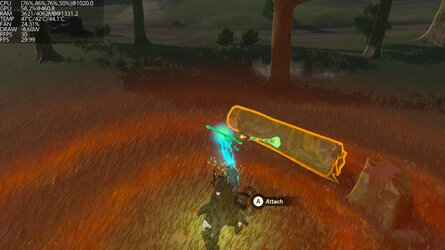
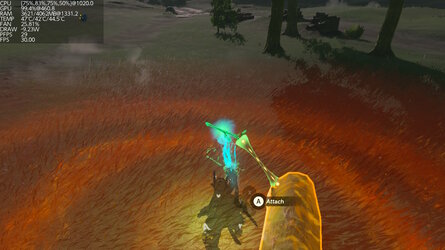
What leads me to believe they are snapping to the nearest vertex is that each branch end on sticks gets a snap point, I would have to see the collision mesh itself but this seems automatic and not authored points, since its pretty loose and the lower branch doesn't really snap as strongly. Maybe its something to do with density of nearby vertices that lets them detect protruding edges.
Small objects (I will use two terms from now on, small objects being collectable items, objects intended to be merged to weapons only or objects too small for actual building, and building objects, objects with assigned snap points and intended for building.) seemingly don't hard snap to building object snap points, they are biased towards them but allow placement anywhere along the collision mesh. Will probably look more into this when I get to doing a breakdown of the building system.
Now this is not to say small objects don't have snap points. I don't think they are actual defined points but instead the origin of the mesh. I believe when it comes to weapon merging there are two types of merges, authored merges that replace the blade of a sword or the shield of a shield, and then non authored merges that just attach the object to the sword/shield using the origin as a snap point.
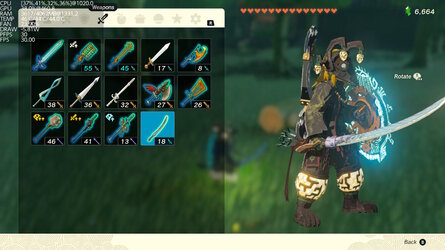
Attaching a blade to a weapon will replace the blade with the new one, but leave the handle from the original base weapon. I assume there is vertex data in the base weapon mesh that is used to hide just the blade when merging weapons, since in that image the blade replaces the front of the stick base weapon, but the stick handle is unchanged. I doubt they made unique models for each weapon and a version with just the handle, that seems like too much work for a system that is seemingly designed around modularity. The blade gets attached to a specified point, which would seemingly be disconnected from the building snap points, seems to be set for the end of the handle and the bottom of the blade, unless they are just using the blade origin to snap to the handle attachment point.
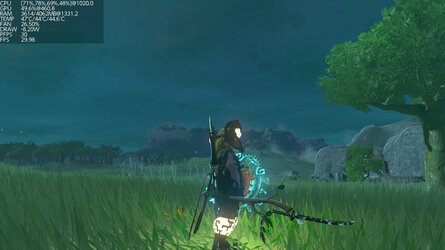
The second type of weapon merge is where the attached item simply gets snapped to the base weapon using the origin of the attached item. The origin of the item attached, in this case a sword, is whats also used when the weapon is held by link, you can see its the same spot his hand sits. I'm not sure if its a specific end of weapon point specified (in which case weapons only might have their own building attachment points and that would explain the unique behavior with the stick mentioned earlier). I believe every shield merge pretty much uses this second type, with the zonai base shield that have nothing just having the item get attached to the origin of the shield.
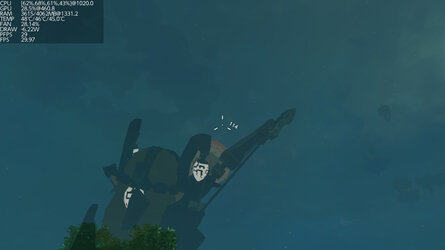
Arrows just attach the item from its origin to the end of the arrow which is probably a hardcoded position since arrows are always the same.
As for weapons getting unique abilities, its most likely a data table containing every item and its list of effects (or a tag system, same idea). Each blade item would have the weapon type, telling the game what animation set to use and whether it can cut trees or break rocks or whatever, then it would contain what element that item is, if it has an element. I believe all the elements do the same thing regardless, its just enabling that flag. Then it would have the durability multiplier, I'm sure some giga autist has figured out the scaling already, or datamined it, and then the damage multiplier (or addition, didn't check if its additive or multiplicative, probably additive). There are probably a bunch of outliers for specific items like the zonai tools, but that probably hooks into the existing zonai system and just sends the item an 'activate' signal when blocking with shield or attacking.
This is just all observations, I'm sure modders have already figured out how everything actually works and all that. I'll do the building stuff later, but it doesn't seem that complex, this wasn't that complex either. It's just a modular system.





